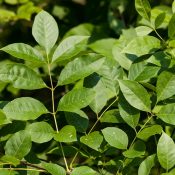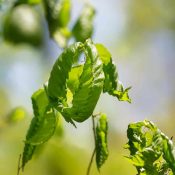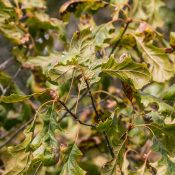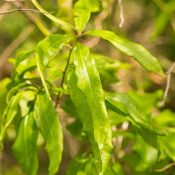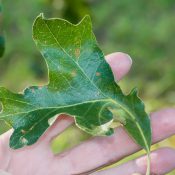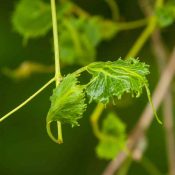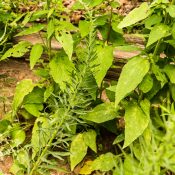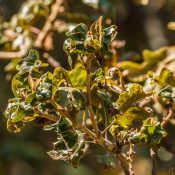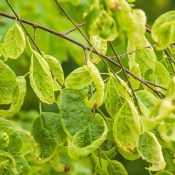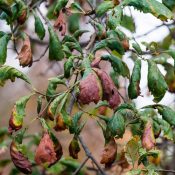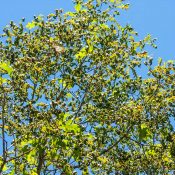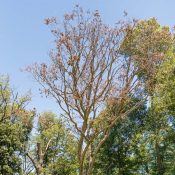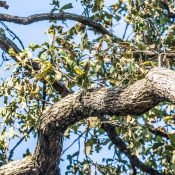In recent years, herbicide drift has skyrocketed across Illinois. We’ve worked to document this drift, but we can’t be everywhere all the time.
Paying attention to what is happening on your property and documenting and reporting symptoms of herbicide if you see them is important.
The video below is designed to help people recognize symptoms of PGR exposure in crops, trees, and other wild plants and provides information on how and where to document or report symptoms.
Aren’t sure what’s wrong with your tree? Below we have a photo library of symptoms of herbicide drift.
PHOTO LIBRARY OF SYMPTOMS
Note to the user: Most symptom photos will have more than one symptom demonstrated on a leaf. For example, MANY will show leaf cupping/curling in addition to the symptom of focus for a particular category. Nature often presents leaves with more than one symptom. Please click a box to see examples of injury.
Normal Leaves
These are examples of normal leaf growth from varying species.
Curled/Cupped
Curling of leaf margins or cupping of entire leaf. Leaf edges may bend up or down, or in more severe cases, the entire whole leaf is curled up or more commonly downward. The latter creates a “boxing-glove” like look in oaks. Both may be accompanied by discoloration at the margin (e.g., yellowish or grayish). As injury intensifies, edges may turn brown or black. In either case, the color change may also be noted as a symptom (see Chlorosis and Necrosis description below).
Epinasty
Twisting of leaf petioles orienting leaves sideways or upside down. This is relatively easy to spot when lower leaf surfaces are colored differently than the upper surface.
Strapped
Leaf blade is unnaturally lengthened or “stretched” in relation to width. It can be accompanied by twisting of the blade surface. It is not necessary to record twisting with strapping.
Twisted and/or Deformed
More or less normally proportioned leaf blade is twisted, has an irregular surface, and/or is irregularly lobed.
Irregular Margins
Abnormal wavy, “crinkled,” or “scallop shell-like” margin (e.g., in redbud or dogwood); or veins at margins may protrude as distinctive points (e.g., in wild grape).
Shoot Symptoms
Elongated, Coiled, or Bent
Pronounced shoot elongation with bending or coiling, typically only seen in spring in developing shoots. It is often accompanied by leaf abnormalities.
Deformed and Growth Suppressed
Overall suppression of shoot elongation and stunting of leaf growth. Generally, leaves will show one or more symptoms such as chlorosis (e.g., box elder) or twisting and deformation (oak).
Additional symptoms: Leaves
Chlorotic
Abnormal light green, yellow, gray, or white coloration of leaves. Many newly emerging leaves are these colors or orange or red before turning a deeper green. Unless experienced, rate chlorosis only on mature or near mature leaves. It may be at edges or entire leaf.
Necrotic
Brown or black tissue indicating tissue death, usually developing at leaf edge and proceeding inward.
Second Growth
Especially for oaks, if there is obvious leaf damage, check to see whether there is new leaf growth at twig end that appears to have emerged after the 1st spring growth.
Additional symptoms: Trees
Death
Refers to whole tree death. Rate only for trees which clearly leafed out in the current growing season and then died. Observe leaves for any remaining potential injury symptoms.
Dieback
Refers to branches dying usually from ends inward. In severe cases, whole limbs may dieback. As for death, rate as present only if the dead portion clearly leafed out in the current growing season and then died. Otherwise, die-back may indicate damage from previous growing season(s).
Epicormic branching
Occurs when twig growth (sometimes dense) occurs on larger branches or main trunks, often seen when dieback of branches is occurring. May also indicate damage from previous growing season(s).
Prairie Rivers Network is a member of the Save Our Trees – Coalition for Herbicide Pollution Accountability.

